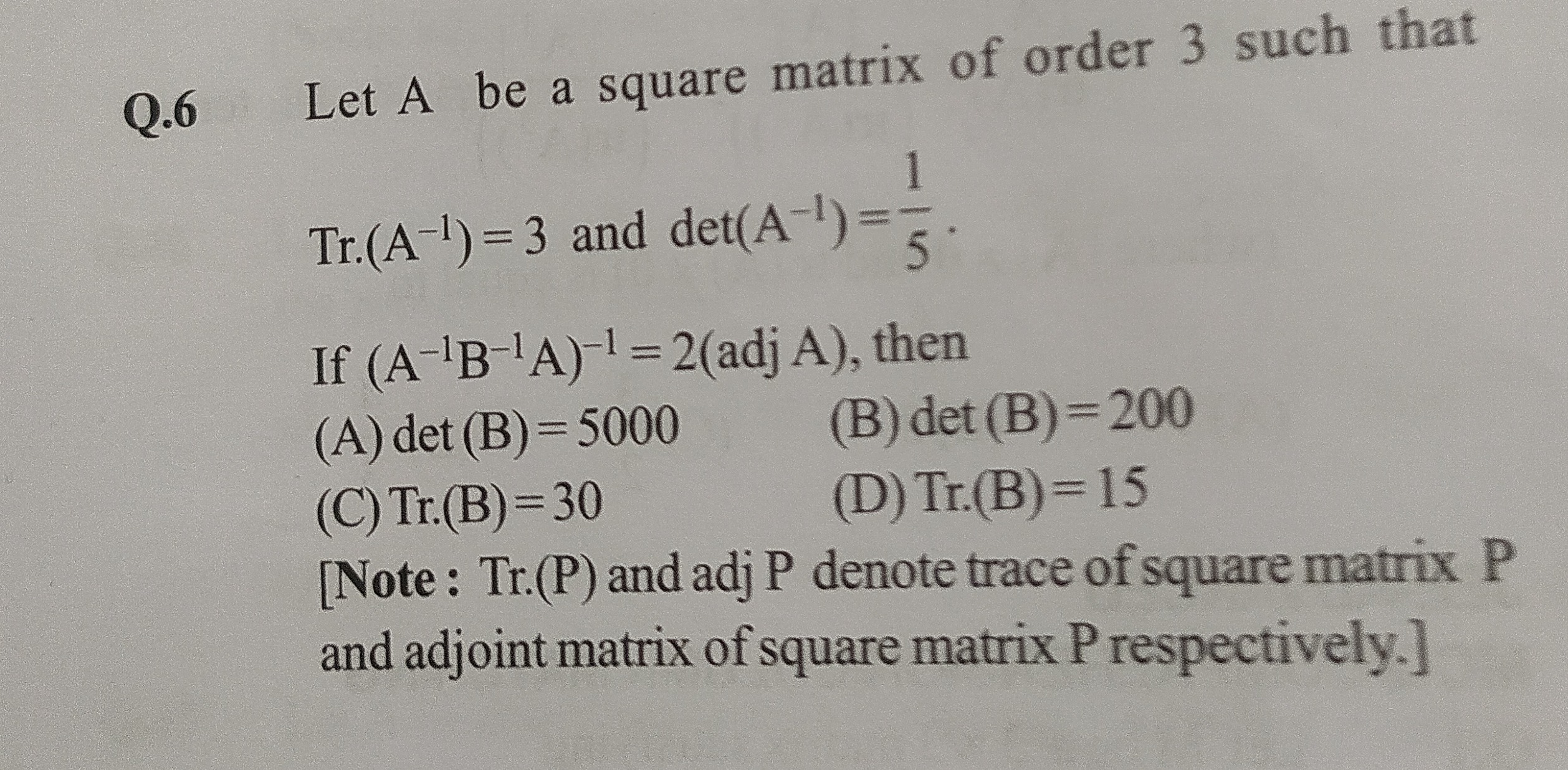Question
Question: Let A be a square matrix of order 3 such that $Tr.(A^{-1}) = 3$ and $det(A^{-1}) = \frac{1}{5}$. I...
Let A be a square matrix of order 3 such that
Tr.(A−1)=3 and det(A−1)=51.
If (A−1B−1A)−1=2(adjA), then

det (B) = 5000
det (B) = 200
Tr.(B) = 30
Tr.(B) = 15
det (B) = 200, Tr.(B) = 30
Solution
We are given Tr(A−1)=3 and det(A−1)=51.
From the property det(A−1)=det(A)1, we have det(A)=det(A−1)1=1/51=5.
We are given the equation (A−1B−1A)−1=2(adjA).
Using the property (XYZ)−1=Z−1Y−1X−1, we have (A−1B−1A)−1=A−1(B−1)−1(A−1)−1=A−1BA.
Using the property adjP=det(P)P−1, we have adjA=det(A)A−1. Substituting det(A)=5, we get adjA=5A−1.
So, the given equation becomes: A−1BA=2(5A−1) A−1BA=10A−1
To solve for B, we can pre-multiply both sides by A: A(A−1BA)=A(10A−1) (AA−1)BA=10(AA−1) Since A is invertible (as det(A)=5=0), AA−1=I3, where I3 is the identity matrix of order 3. I3BA=10I3 BA=10I3
From BA=10I3, we can find the determinant of B. Taking the determinant of both sides: det(BA)=det(10I3) Using the properties det(XY)=det(X)det(Y) and det(cIn)=cndet(In) for a scalar c and identity matrix In: det(B)det(A)=103det(I3) det(B)×5=1000×1 det(B)=51000=200.
Now, let's find the trace of B. From BA=10I3, we can post-multiply by A−1 (since A is invertible): BAA−1=10I3A−1 BI3=10A−1 B=10A−1
Now, take the trace of B: Tr(B)=Tr(10A−1) Using the property Tr(cA)=cTr(A): Tr(B)=10Tr(A−1) We are given that Tr(A−1)=3. Tr(B)=10×3=30.
So, we have found that det(B)=200 and Tr(B)=30.
